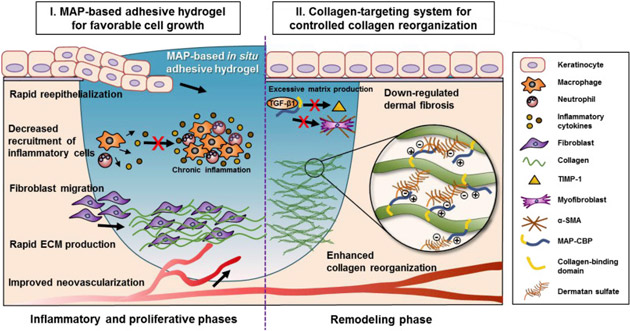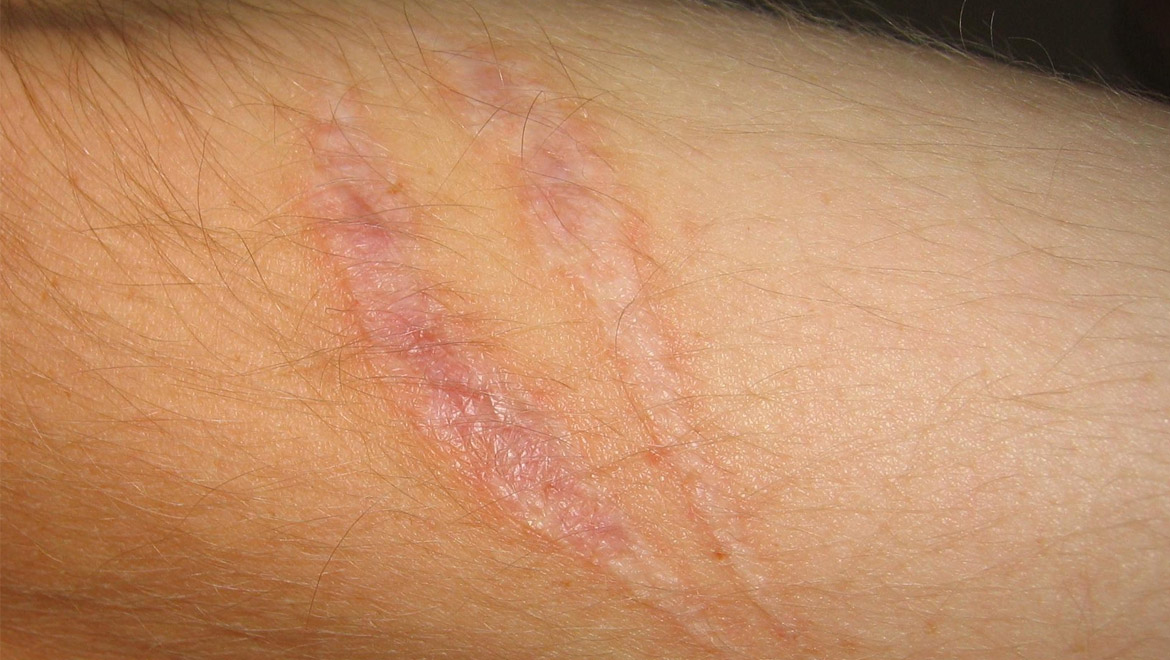Anyone who has been unfortunate enough to injure themselves badly enough for the area to scar knows that even with the best medical care, you will usually be left with an area of skin which feels noticeably different when healed.
The reason for this is that as the damaged skin begins to heal, the broken collagen fibres begin to re-grow. In normal, healthy skin, these fibres grow in a regular woven pattern with individual fibres criss-crossing each other neatly. When the collagen fibres re-grow after a trauma, they instead form uneven and irregular bundles. Here, the collagen fibres grow parallel to each other, with less criss-crossing. The result is the characteristic bumpy appearance of a scar.
Common methods of treating scars involve stitching the wound together with surgical thread, the use of medical adhesives; gels and laser therapy. None of these therapies currently offer the complete rejuvenation of healthy skin, which is what a team from South Korea, based at the Pohang University of Science and Technology have been attempting to do.
In order to achieve this, they turned to an unlikely source: the marine mussel. If you’ve ever tried to prise one of these bivalves from its rocky habitat, you’ll know that for their size they possess an impressively strong ability to stick to the rock they call home.

Schematic representation of proposed mechanisms for enhanced in vivo scarless skin regeneration where a natural healing-inspired MAP-based collagen-targeting surgical glue was used. At an early stage, the tightly-sealed adhesive hydrogel can accelerate initial wound healing without provoking chronic inflammation by providing highly compatible environments for reepithelialization, neovascularization, and rapid collagen synthesis. Then, the collagen-targeting glue system can contribute to the prevention of scar formation by controlling collagen fibril growth, tissue-specific reassembly, and by down-regulating the expression of fibrogenic factors during the remodeling phase. (clinicalkey.es)
The team, led by Hyung Joon Cha, combined the adhesive proteins from mussels with decorin, which is a skin protein involved in collagen binding and healing. This glue was then tested on rats, with an 8mm wide, deep wound. The glue was spread over the wound and covered with plastic, whilst a control group with the same size wound received only a plastic covering, and no glue.
The results were certainly encouraging, with wounds treated with the glue being 99% closed within 11 days. In contrast, for the rats in the control group, only 78% of the wound had closed, or healed, in the same amount of time.
Interestingly, the scars in the rats treated with the glue also regenerated skin with follicles and blood vessels, which do not re-form in normal scar tissue.
It appears that the glue specifically targets the collagen within the skin, with the team observing that “the improved dermal collagen architecture was demonstrated by uniform size of collagen fibrils, their regular packing, and a restoration of the healthy tissue component.”
The plan is now to extend testing of their glue to other species in order to explore whether this is a form of scar healing therapy which could conceivably be extended to human medicine. Whilst accidental scars could definitely benefit from this, so could large surgical scars which require extensive aftercare to promote effective healing.

The wounds that received the new treatment (bottom) showed less scarring than those that didn’t (top) Jeon EY, Choi B-H, Jung D, Hwang BH, Cha HJ. (newscientist)
The field of scar treatment is certainly one that is currently keeping scientists busy. As well the team in South Korea, the New Scientist reports that other groups are looking into the effectiveness of a wide range of potential treatments, ranging from using monoclonal antibodies to the application of embryonic stem cells.
It certainly seems likely that in the next few years we will approach the healing of these uncomfortable and sometimes unsightly wounds with a new and exciting range of innovative products.
Top image: Image of a scar (CC BY-SA 3.0)







No comment